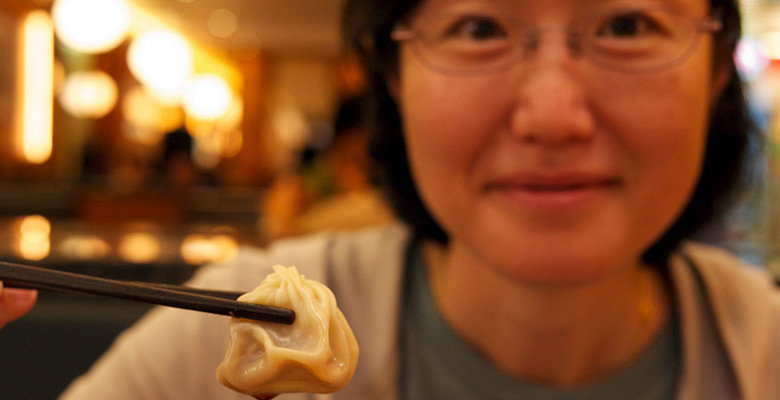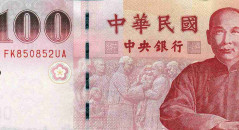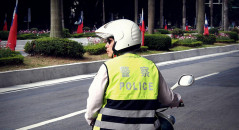
Taiwan offers a wide variety of Asian and Western options; from everyday affordable snacks to fine dining
Western food
Restaurants from outside Taiwan generally fall into one of two categories; the “taiwanified” group of restaurants where large adjustments have been made to suit the local palate, and the “authentic” eateries that try to stick close to the original taste of the cuisine. For example, in recent years hundreds of small pasta places have opened up around the country, but diners expecting the flavour of Sicily or Rome will be disappointed—the pasta is cooked until very soft, and the sauces would be unrecognisable to the average Italian. On the other hand, in the major cities there are some excellent more-or-less authentic foreign food places around. In Taipei, for example, there is haute cuisine available (at a commensurate price) at establishments like Paris 1930 and DN Innovación. There are also more affordable places covering the essential comfort foods of home: pizza, Tex-Mex, steak, diner-style places, Indian, barbecue, British pub food, South African pies, falafel and pita, burgers, salads, and more. Western chains in Taiwan include Burger King, California Pizza Kitchen, Chili’s, Dairy Queen, Dominos, KFC, Kripsy Kreme, McDonalds, Outback, Pizza Hut, Starbucks, Subway, and TGI Friday’s.
The further you move away from large conurbations, the scarcer these options become. An average town in middle Taiwan will probably include Dominos, KFC, and McDonalds (as well as the Japanese fast food chain Mos Burger), but is unlikely to feature any smaller places that you might call authentic.
Chinese and Taiwanese food
Looking for Egg Fu Yung, General Tso’s Chicken, Crispy Beef, or Chop Suey? Chinese food differs widely across the world, and the classics you are used to from your own homeland are unlikely to be the same in Taiwan, if they even exist in the country. Fried rice and dim sum are usually pretty recognisable and close in taste to Western Chinese, but much of the other food on offer may be totally new to you. The Taiwanese are not squeamish when it comes to using every part of the animal, and certain things like chicken claws and pig intestines are considered delicacies. The more adventurous traveller will want to wade in to these unusual delights, but for more conservative diners there is a wealth of tasty alternatives using more familiar cuts of meat.
The quality and price—the two things don’t always come together—of Chinese/Taiwanese food varies between excellent and execrable, exorbitant and economical. It’s possible to eat pretty well on NT$50, and to blow NT$5,000 on an extravagant feast. A typical lunchtime biandang—a boxed lunch with rice, meat, and a couple of types of vegetables—usually retails for between NT$40–100. A similar price-range applies for many hole-in-the-wall roadside places. A mid-range restaurant will cost between NT$200 and NT$700 per person, and the sky is the limit for the high-end places.
Vegetarianism is very big in Taiwan, and there will be several vegetarian restaurants in even small towns. Often these shops will have a Buddhist swastika on the sign, which means the food inside will adhere to Buddhist vegetarian standards—a little stricter that what is considered vegan in the west, as aside from the absence of meat and dairy products there will also be no onion, garlic, or coriander present.
Some Japanese food has become thoroughly indigenised, such as teppanyaki, takkoyaki, and various sweet treats like mochi that are now generally considered “Taiwanese”. Other cuisine like sushi retains a distinctly Japanese style. Around Taiwan you can find some superb Japanese restaurants, especially in the Little Tokyo quarter around Linsen North Road in Taipei. Japan is well-regarded among Taiwanese people, and both the food and other aspects of the culture are popular on the island.
Food Courts
Most of the large department stores in Taiwan will have a food court, often in the basement. This provides a large number of options with a communal eating area, ideal if you want to eat noodles while your friends have a hankering for Korean barbecue or a sub sandwich. At peak hours it can be difficult to get a seat, so if you can, plan your meals there for off-peak times.
Tipping
It is not generally a part of Taiwanese restaurant culture to tip your waiter. In smaller, traditional places the idea would seem quite amusing to the people working there. Though many mid-range places add a “service charge” of 10% this usually does not go to your server, but rather it goes in the pocket of the owner. If you want to tip your waiter directly you can do, but it is generally not expected. At higher-end restaurants, particularly those that serve western cuisine, tipping is more typical, but there is not a set percentage you should offer; in essence, it’s what you feel comfortable with and what you feel the service is worth.
Health Concerns
The standard of hygiene in Taiwanese small restaurant kitchens is generally not as high as you may be accustomed to in your own country. While cases of serious food poisoning are rare, the possibility of suffering with milder symptoms is higher. To minimise the risk, eat at busy places with hot food and favour those where you can see into the kitchen. Ingredients can also cause some problems, especially for those allergic to seafood or intolerant to monosodium glutamate (MSG). A lot of street food can also be quite greasy, so you may want to shop around for small eateries that fit your taste and idea of healthy eating.
Water
While local governments in many areas rate the tap water as drinkable, most Taiwanese people will prefer to either filter it, or buy bottled water for consumption. Standards of bottled water also vary, so be sure to ask around for a reputable brand. The water in restaurants will usually be filtered, heat-treated, or both, and is generally safe to drink. Ice will be made from this same supply, but some unscrupulous vendors may use less sanitary sources for their ice-water, so be alert when purchasing iced drinks from a smaller outlet; check the general cleanliness of the store as a guide to the proprietor’s concern. Chain restaurants are generally held to a higher standard by authorities, and you should not be concerned about ice or water from these places.
Photo by Jun Seita



